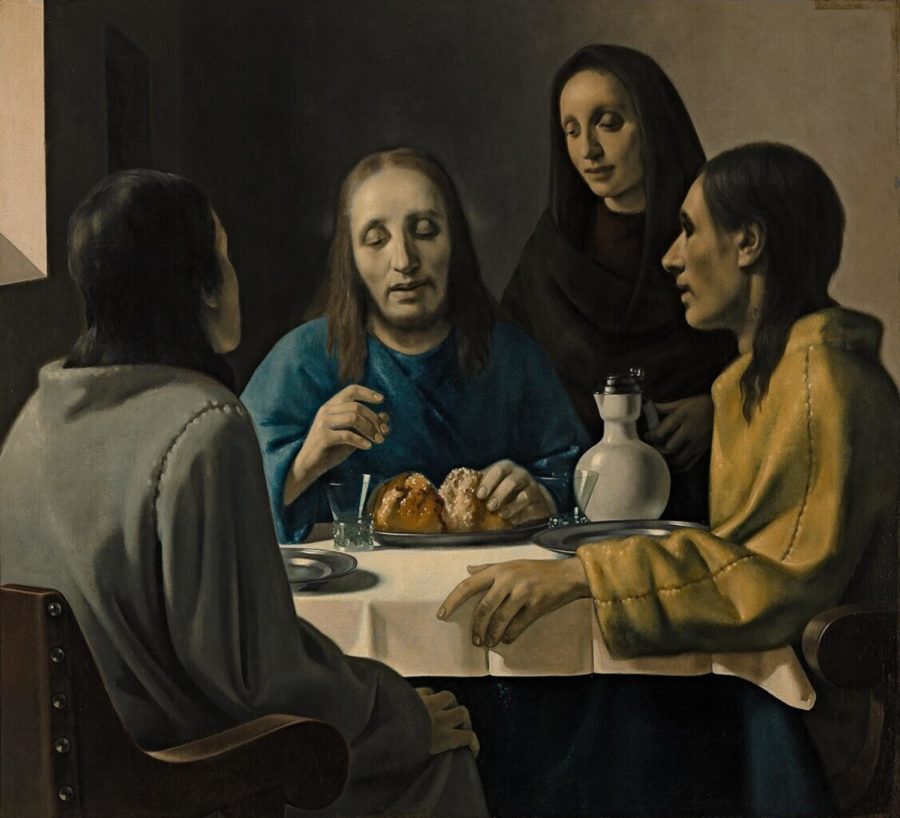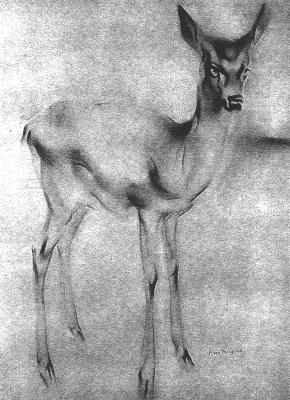A Profile of the Art Forger Han van Meegeren
The story of an art forger who was not only successful in selling his forgeries, but who also became a national hero in the Netherlands after fooling the whole world.
Han van Meegeren, Public domain, via Wikimedia Commons
“The Supper at Emmaus” is one of Han van Meegeren’s greatest forgeries of Johannes Vermeer’s work. It was only after Han van Meegeren admitted that he painted this painting that the forgery was discovered.
If someone told you that an art forger was able to sell his painting for millions of dollars and became a national hero, you would probably think that person is lying to you. In reality, they might be talking about Han van Meegeren, one of the most successful art forgers of the twentieth century.
Han van Meegeren’s Early Life
Han van Meegeren was born on October 10th, 1889, in the city of Deventer in the Netherlands. He was the third child born into his family. His father was a French and history teacher in Kweekschool, a training college for school teachers, in the city of Deventer. However, Han van Meegeren’s father strictly forbade Han van Meegeren from painting and constantly derided him. As a child, his father often forced him to write a hundred times, “I know nothing, I am nothing, I am capable of nothing.” It wasn’t until he met his mentor, art teacher Bartus Korteling, while attending the Higher Burger School that Meegeren was able to grasp some art skills. There, Han van Meegeren learned how to make and mix colors similar to that of the Dutch Golden Age style. It was Korteling’s influence that van Meegeren began to paint exclusively in the style of the Dutch Golden Age and gave him the skills to forge paintings later on.
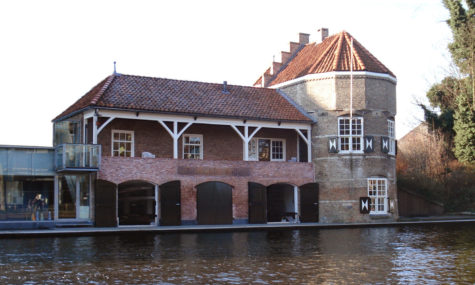
Initially, Han van Meegeren didn’t start off as a forger. His dad wanted him to be an architect, ignoring Meegeren’s passion for art, and sent him to Technische Hogeschool. Still, Han van Meegeren found a way to pursue his dream and took drawing and painting lessons offered at the school. During his time there, he easily passed his preliminary examinations, but he never took the final examination at the school.
In 1913, Han van Meegeren made an important decision. He gave up on his architecture studies and concentrated on drawing and painting at the art school in The Hague. In the following years, Han van Meegeren drifted along Scheveningen, where he had moved with his family; Han van Meegeren had married art student Anna de Voogt a year before. Meegeren made sketches and paintings of the tamed roe deer belonging to Princess Juliana in his studio at The Hague. He sketched posters, painted pictures for the commercial art trade, and made portraits in his studio for a living. Han van Meegeren eventually remarried, to the actress Joanna Theresia Oerlemans in Woerden in 1928, after he was divorced from Anna de Voogt on July 19th, 1923.
The start of Han van Meegeren’s legendary forgery
1928 was the all-important year in which Meegeren started forging other artists’ work. This was prompted by the art critics who began to shift away from Han van Meegeren’s work and instead sought Cubism, Surrealism, and other modern movements. Prior to 1928, these art critics had described Han van Meegeren paintings as “gifted,” but, from 1928 and onward, art critics claimed that his “gift” was merely an imitation and his talent was limited to copying other artists’ work. One critic even wrote that he was “a gifted technician who has made a sort of composite facsimile of the Renaissance school; he has every virtue except originality.” This greatly displeased Han van Meegeren, and he decided to disprove the critics by fooling them through what he is best known for: painting in the style from the Dutch Golden Age.
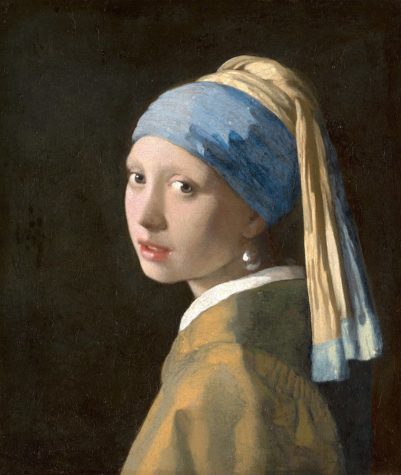
Starting from 1932, Han van Meegeren started delving into the biographies of the “Old Masters,” studying their lives, occupations, trademark techniques, and more, to make sure he could portray his work as closely to the original painters as possible. After forging the works of several famous artists, Han van Meegeren chose to forge the paintings of Johannes Vermeer for his masterpiece. Vermeer had created several paintings, with the most well-known one being the ‘Girl with a Pearl Earring.’ However, Veermer’s work did not gain much popularity until the beginning of the twentieth century, with only about thirty-five of his paintings surviving in this world. This gave Han van Meegeren an ample opportunity to pretend that his forged work was one of Vermeer’s authentic, surviving paintings.
In October 1932, art expert Dr. Abraham Bredius published an article about two recently discovered paintings in the style of Vermeer, entitled ‘Landscape and Man and Woman at a Spinet.’ He claimed the former was a fake, but described the latter as not only an “authentic Vermeer,” but also “very beautiful,” and “one of the finest gems of the master’s œuvre.” In reality, the latter was the work of Meegeren, demonstrating the talents he developed in forgery after just one year.
Han van Meegeren’s techniques weren’t easy to refine, though, as he spent six years after 1932 arduously working on his techniques to master them. Han van Meegeren first bought authentic seventeenth century canvases and mixed his own paints from raw materials using old formulas to ensure that they could pass as authentic. In addition, to mimic Vermeer’s strokes, he created a paint brush similar to Vermeer’s. Han van Meegern was also an expert in chemistry, as he was able to fool art critics by using phenol formaldehyde, a chemical that causes paint to harden after application, making the paintings appear 300 years old. The most important step came after mixing the paints with lilac oil: baking the painting at 100 °C (212 °F) to 120 °C (248 °F) to create cracks along the surface, the finishing touch for an original Vermeer painting.
Han van Meegeeren has used this well-developed technique to forge several paintings that were thought to be the work of Vermeer, for example, ‘The Supper at Emmaus,’ ‘The Head of Christ,’ ‘The Last Supper II,’ ‘The Blessing of Jacob,’ and ‘The Adulteress.’ It was thought that Han van Meegeren’s forgeries had earned him between 5.5 and 7.5 million guilders (or about 25–30 million in United States dollars today).
How did Han van Meegeren get caught?
After hearing about how talented Han van Meegeren was at forging, you might be wondering: how did Han van Meegeren get caught? Well, it was Han van Meegeren who exposed the truth of his forgery. To understand why, we need historical context from World War II.
During World War II, Germany occupied Poland after a series of intense battles. In 1942, under German occupation, Han van Meegeren sold a forged piece named ‘Christ with the Adulteress’ to the Nazi banker and art dealer Alois Miedl, who worked for Hermann Göring, Nazi’s highest military officer. Han van Meegeren gained 137 looted paintings while trading with Miedl. Everything seemed to be going well, with Han van Meegeren gaining hundreds of valuable paintings from a simple forgery. However, after Germany lost World War II, the Allied Powers discovered that, to their shock, Han van Meegeren had traded a national treasure of the Netherlands to their enemy.
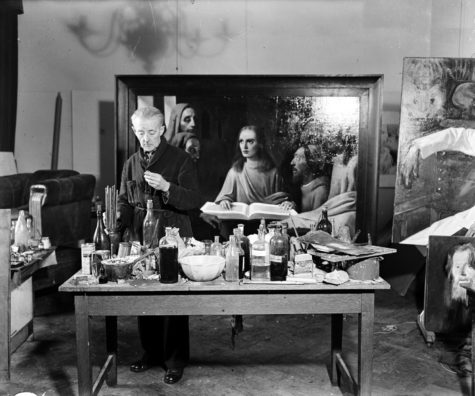
On May 29, 1945, Han van Meegeren was arrested and charged with fraud and aiding and abetting the enemy. He was kept captive in the Weteringschans Prison as an alleged Nazi collaborator and plunderer of Dutch cultural property, threatened by the authorities with the death penalty. In his trial, Meegeren claimed that the painting was really painted by himself, rather than Vermeer. To prove his innocence, Han van Meegeren forged his last painting between July and December of 1945 in the presence of reporters and court-appointed witnesses: ‘Jesus among the Doctors,’ also called ‘Young Christ in the Temple.’ After examinations, Han van Meegeren was deemed not guilty of aiding the enemy, instead only being guilty of forging.
The end result
After Han van Meegeren proved that he wasn’t guilty of the initial charges, his trial changed from a death sentence to a one year imprisonment. Meegeren’s role suddenly changed from that of a war criminal to a national hero. However, before Han van Meegeren could be released, he suffered a heart attack on November 26th, 1947, and another one on December 29th, dying the following day.
In Han van Meegeren’s story, we see how an ordinary kid can become the most famous art forger in the world.
If someone told you that an art forger was able to sell his painting for millions of dollars and became a national hero, you would probably think that person is lying to you. In reality, they might be talking about Han van Meegeren, one of the most successful art forgers of the twentieth century.
Fei Ji is a Chief Graphic Designer and a Copy Chief for ‘The Observatory’ yearbook. He is also a Staff Reporter for the school’s newspaper ‘The...

